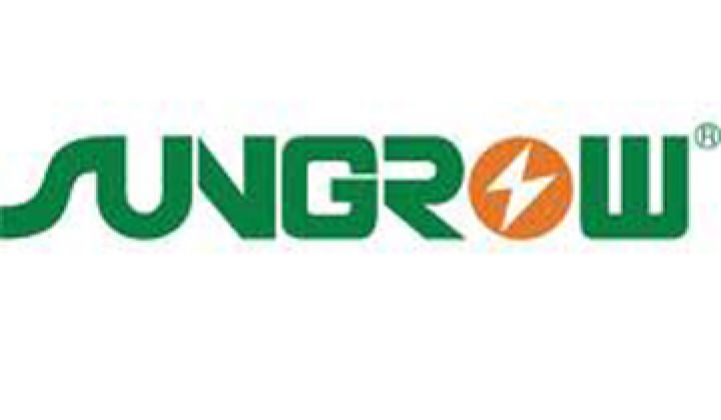Sungrow. It’s not a name you hear all the time at solar conferences at the moment, but give it a few years.
The Hefei, China-based company is the first of what could become a wave of inverter makers from China using that time-tested formula of low costs, increasing technical sophistication and domestic support to soak up global market share.
Sungrow shipped 500 megawatts of inverters last year, according to GTM Research analyst MJ Shiao, and will expand this year.
That constitutes a drop in the bucket in the overall inverter market. Globally, 21.2 gigawatts' worth of inverters shipped in 2010 and 24 gigawatts will ship this year, Shiao added.
The company, though, can often undercut European and North American manufacturers by 10 percent, he added. Lesser-known Chinese names have tried to undercut established manufacturers by 20 percent.
Founded in 1997 to supply solar and wind inverters to government projects, Sungrow controls 40 percent of the small, but rapidly growing, Chinese market, according to various estimates, but ships most of its products overseas. Overall, Sungrow claims it has planted 1 gigawatt of inverters in the field.
In March, UniCredit Leasing Group confirmed that Sungrow is on the “bankability” list, which potentially will ease the way for participating in European projects. A few weeks later, it formally opened a joint manufacturing facility in Ontario with HiFi Solar Energy that is capable of generating 200 megawatts' worth of inverters a year.
In 2010, it had 1 gigawatt worth of capacity and hopes to triple that in 2013 to 3GW.
A rumored IPO in the U.S. earlier this summer did not materialize. Nonetheless, U.S. investors are interested. VC firm Kleiner, Perkins Caufield and Byers is an investor.
Historically speaking, Sungrow and the other Chinese inverter makers would seem like a lock. Ten years ago, Chinese solar module makers constituted an asterisk. Suntech didn’t even exist: Zhengrong Shi founded the company in September 2001. Now, Suntech is the largest manufacturer in the world and companies like Trina and Yingli fill out many of the top spots in cells and modules.
Polysilicon? It is a sophisticated, highly technical market where Europeans and North Americans could maintain advantage, some have argued. No one told GCL-Poly Energy holdings. GCL President Yumin Liu said in April that the company’s wafer capacity will balloon to 5.5 gigawatts and hit 6.5 gigawatts by the middle of 2012, while polysilicon production will rise from 31,000 tons to 65,000 tons in the same period.
GCL’s costs come to an “obscenely low” $22.90 a kilogram, according to Shyam Mehta of GTM Research. (Disclosure: the analysts quoted here are co-workers.)
Inverters are pieces of electrical equipment, similar to the billions of pieces of equipment manufactured in China every year. Cost also remains a paramount concern: under the SunShot program, the Department of Energy hopes to drop the cost of inverters in solar installations to ten cents a watt, or one-tenth of the overall capital budget, by around 2017.
Satcon, PowerOne and a few other international manufacturers already have inverter manufacturing facilities in China. A migration of talent, skills and know-how to lower-cost domestic firms seems almost inevitable.
Taiwanese contract manufacturers with large mainland operations could become more prominent in the market too. (Eaton, the U.S. conglomerate, bought Taiwanese inverter maker Phoenixtec in 2007.)
The inverter market, though, does come with a few wrinkles. Inverters might account for the smallest part of the budget of solar installations, but they often cause the lion’s share of headaches, giving incumbents an advantage.
“There are a lot more components in inverters [than in panels] -- and a lot more components that can go wrong,” Shiao said. “Quality and reliability are a big deal.”
Microinverters have also begun to gobble up market share at the expense of the centralized inverters. In North America, microinverters have become commonplace in residential installations and are gaining ground in commercial arrays because of touted advantages in uptime, power production, and installation.
Europeans have begun to take an interest in microinverters, too, said Ron Van Dell, CEO of microinverter maker SolarBridge Technologies. AUO and Kyocera, among others, will soon release so-called AC modules with integrated SolarBridge inverters. The return of AC modules -- an experiment that didn’t work the first time around -- comes as a result of recent technological improvements that will effectively give microinverters a 25-year lifetime.
Sungrow and many of the other Chinese inverter makers specialize in centralized inverters.
Inverters, despite price wars, will also likely become more sophisticated. Executives at Solectria and General Electric recently outlined how inverters will absorb many smart grid functions, acting almost like the computerized brain of solar fields. Could Chinese companies figure this out? Sure. Local IT outfits like networking giant Huawei could participate. But it could take time to fine tune the technology.
While China won’t colonize inverters this year, the trend definitely bears watching, particularly in periods of high demand. Ramping up factory capacity in inverters is relatively straightforward. Manufacturers don’t need to fine-tune deposition chambers or automated factory lines. Inverters are largely assembled. Expanding capacity means getting some more warehouse space, workers and equipment.
Suddenly, a name that vaguely sounds familiar says it can help, and it can cut your costs ten percent…



